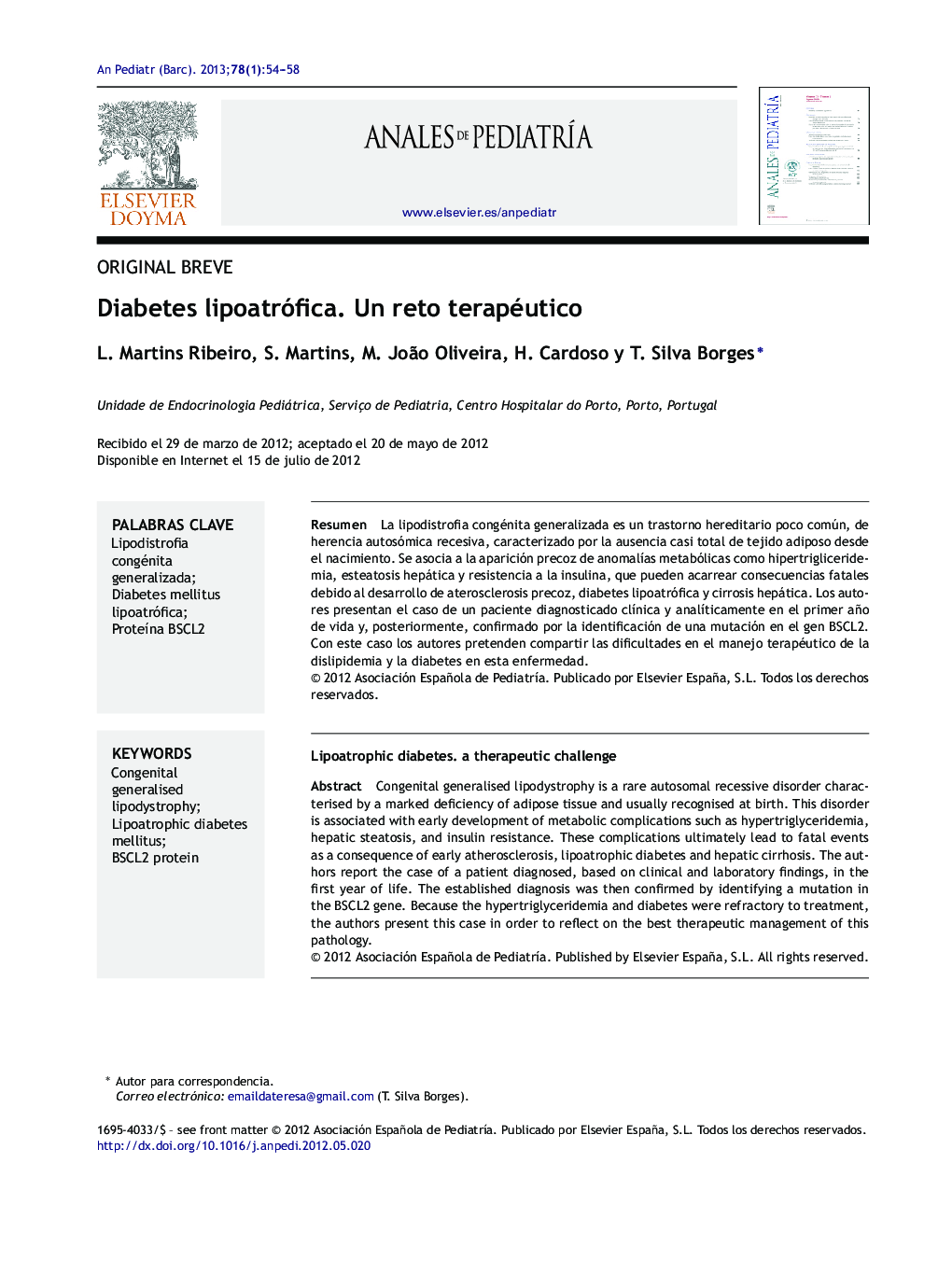| کد مقاله | کد نشریه | سال انتشار | مقاله انگلیسی | نسخه تمام متن |
|---|---|---|---|---|
| 4141893 | 1272347 | 2013 | 5 صفحه PDF | دانلود رایگان |

ResumenLa lipodistrofia congénita generalizada es un trastorno hereditario poco común, de herencia autosómica recesiva, caracterizado por la ausencia casi total de tejido adiposo desde el nacimiento. Se asocia a la aparición precoz de anomalías metabólicas como hipertrigliceridemia, esteatosis hepática y resistencia a la insulina, que pueden acarrear consecuencias fatales debido al desarrollo de aterosclerosis precoz, diabetes lipoatrófica y cirrosis hepática. Los autores presentan el caso de un paciente diagnosticado clínica y analíticamente en el primer año de vida y, posteriormente, confirmado por la identificación de una mutación en el gen BSCL2. Con este caso los autores pretenden compartir las dificultades en el manejo terapéutico de la dislipidemia y la diabetes en esta enfermedad.
Congenital generalised lipodystrophy is a rare autosomal recessive disorder characterised by a marked deficiency of adipose tissue and usually recognised at birth. This disorder is associated with early development of metabolic complications such as hypertriglyceridemia, hepatic steatosis, and insulin resistance. These complications ultimately lead to fatal events as a consequence of early atherosclerosis, lipoatrophic diabetes and hepatic cirrhosis. The authors report the case of a patient diagnosed, based on clinical and laboratory findings, in the first year of life. The established diagnosis was then confirmed by identifying a mutation in the BSCL2 gene. Because the hypertriglyceridemia and diabetes were refractory to treatment, the authors present this case in order to reflect on the best therapeutic management of this pathology.
Journal: Anales de Pediatría - Volume 78, Issue 1, January 2013, Pages 54–58